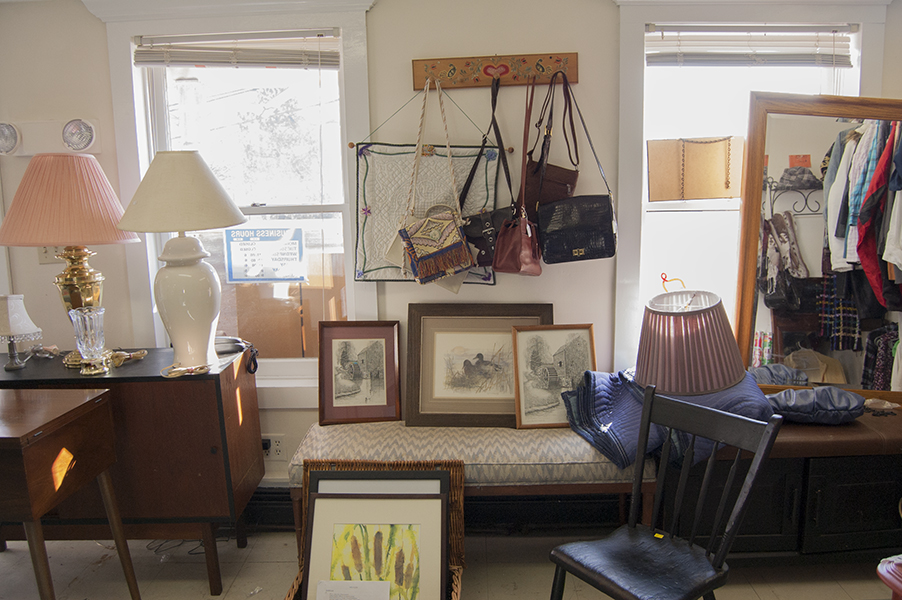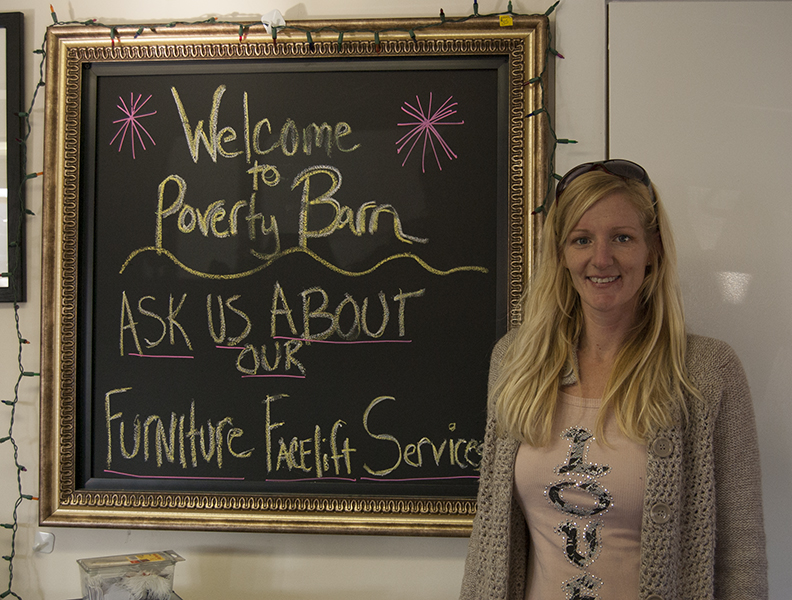

A painted sign reading “Poverty Barn” flanks the side of the road on Old Route 299. The lawn is riddled with a variety of pieces found, purchased or fixed, beckoning customers toward the old house that owner Heather McGill calls “quirky.”
Poverty Barn, a “not-quite consignment” shop specializing in hand refurbished furniture, thrifted clothes, jewelry, art and other items that interest its owners, opened its doors on Oct. 27, 2013.
McGill said she and her partner Nancy Stonecypher decided to go into business together with their shared interest in restoring “real, wood” furniture.
McGill had started selling her work at yard sales, flea markets and farmer’s markets in previous years. People even started to go through her garage inventory at home to shop for items.
“And that’s when I knew I had to get a store,” she said. “Besides, it’s better than going to Target and having to put it together alone and pay an arm and leg for it anyway.”
Both have distinct styles and personalities in their work: several of Stonecypher’s pieces include stenciled designs, while McGill calls hers “shabby chic.”
“I’m a carpenter at heart,” McGill said.
McGill is no stranger to making her own personal furniture, either. She built her own dining room table crafted from reclaimed barn wood.
Directly across from the entrance of the store sits a long, twelve-drawer, buffet-style dresser McGill designed. Distressed and refinished in different shades of blue and green, it’s one of her favorites.
The piece initially arrived as a “trade-in” from a customer who was interested in a different item.
“This girl bought a cabinet from me and wanted to drop off this piece too,” McGill said. “I was able to work out a way for her to get a discount on what she wanted.”
The idea for its redesign was inspired by something she had seen online, she said. The refurbishing process involved a layer of black paint underneath the coats of color before it was distressed.
“I want to keep it and bring it home, but I can’t,” McGill said. “But that’s what we do: buy and fix and sell.”
Items on the floor don’t typically have a long shelf life at the store, McGill said. From the desks and dressers to the clothes and lamps, the inventory is always in flux.
“I always tell people to buy what they like when they see it,” she said. “It probably won’t still be there when they come back.”
For the few items that just won’t “move,” the owners will simply re-work them and put them back out for sale.
“A lot of things we’ll leave plain too,” she said. “People can request personalized pieces. Like if they have an old dresser and want it to look like the stuff we have here, we’ll redo it for them for a fee of like 50 bucks.”
McGill said she tries to price her items in the spirit of the store’s name, taking into account the often-limited price range of her clientele.
“I like to charge people what I would pay for something,” McGill said. “I don’t need to get rich. It’s more of a service.”
